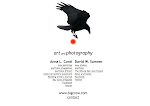 A friend recently asked me for some tips on selling prints and limiting editions. I’m certainly no expert nor am I getting rich selling prints of my work. But I’ve been in and around the business for twenty years and I’ve seen various ‘business models’ in action. My friend found this information helpful, so I figured I’d share it here.
A friend recently asked me for some tips on selling prints and limiting editions. I’m certainly no expert nor am I getting rich selling prints of my work. But I’ve been in and around the business for twenty years and I’ve seen various ‘business models’ in action. My friend found this information helpful, so I figured I’d share it here. Some photographers limit their limited editions to a certain few sizes. They may limit editions to 100 - 500 prints, sizes 16x20 and 20x24 and leave 11x14 prints of the same image as an open edition. Materials can also come into play. Fiber base paper is usually used for limited editions (for B&W prints) and resin coated papers are often used for open editions. With pigment prints, materials can also play a factor: archival rag paper vs. clay coated paper.
The thing to keep in mind is how long you want an image to make money for you. Once you have printed the total number of prints in a limited edition you can't print it again in that particular size.
Limiting editions early in your sales career means images may have a shorter sales life. On the other hand, if you have an open edition of 11x14 prints of an image that becomes very popular over the course of several years, you can decide to create a 16x20 limited edition that will command a higher price per print than if the limited edition had been started earlier. It can also serve to increase the value of the open edition prints. Thus you have a longer sales life per image.
Usually, photographers limiting editions will set a price for the first 25 out of 100 prints, then raise the price per print on the next 25 prints. For example, prints 1/100 - 25/100 = X$ ea., 26/100 - 50/100 = X+X$ ea. or X+%of X, and so on. The higher the edition number the rarer the print and the higher the price. Photographers often hold back the first five prints of an addition to be sold once the rest of the edition has sold out. The five prints, #1 - #5, represent the earliest prints in the edition and can now command a higher price than the price paid for last prints of the edition.
Limiting editions is a good sales strategy, but it really only pays off once you've established a good sales record and created a demand for certain images or certain types of images. If you carefully consider print sizes and materials you can ensure a fairly long sales life for an image in a series of limited editions. Smaller sizes are usually open editions or limited to a high number of prints (1000 or more.) Larger sizes are limited to editions of fewer prints (100 to 500.)
Of course the targeted market is a big factor in making these decisions and this is where a gallery comes in. A gallery should have the information to best decide how to price work in the current market. Make sure not to short sell yourself, at the same time realize that as your work is new to the market it may not yet be able command the higher prices.
Photo: ©2008 David W. Sumner

